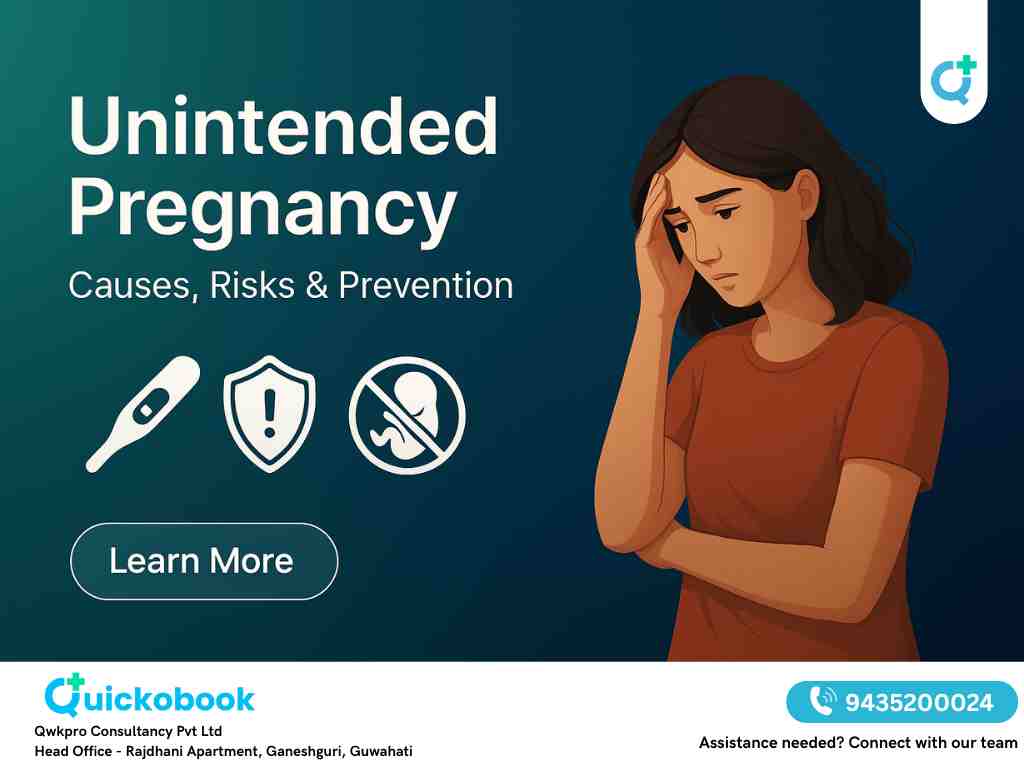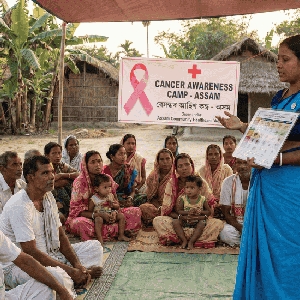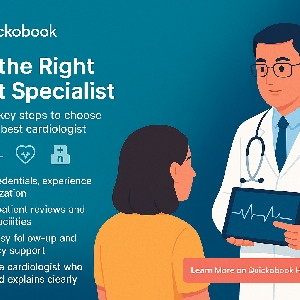Introduction
Unwanted pregnancy remains one of the most sensitive and pressing public health issues worldwide. Despite the advancement of medical science, millions of women face unintended pregnancies every year. According to the World Health Organization (WHO), over 120 million unintended pregnancies occur annually, leading to significant emotional, physical, and socio-economic challenges for individuals and communities.
An unwanted pregnancy occurs when a person becomes pregnant without planning or desire for conception at that time. This can happen due to contraceptive failure, lack of access to reproductive health services, sexual coercion, or misinformation about fertility. Regardless of the cause, it often leaves the individual with difficult choices to make, many of which are influenced by societal pressures, personal beliefs, and available resources.
This comprehensive guide aims to provide clear, non-judgmental, evidence-based information on unwanted pregnancy, including its causes, impacts, options, prevention, mental health considerations, legal aspects, and available support systems. The goal is to empower individuals and families to make informed decisions while helping reduce stigma around this sensitive topic.
Understanding Unwanted Pregnancy
What is Unwanted Pregnancy?
An unwanted pregnancy refers to a pregnancy that occurs when an individual does not wish to conceive or is not prepared to carry a pregnancy to term. It is often used interchangeably with "unintended pregnancy," though there is a slight distinction:
- Unplanned pregnancy – conception occurred accidentally or earlier than desired.
- Unwanted pregnancy – the individual does not wish to have a child at all or under current circumstances.
Both scenarios require timely access to reproductive healthcare services, accurate information, and emotional support.
Common Causes of Unwanted Pregnancy
Unwanted pregnancies can result from various factors, including but not limited to:
- Contraceptive Failure:
- Condoms breaking or slipping.
- Missing oral contraceptive pills.
- Expired or improperly used emergency contraception.
- IUD displacement or improper insertion.
- Lack of Access to Contraception:
- Cost barriers in low-income communities.
- Limited availability in rural or conservative regions.
- Legal or policy restrictions on contraceptive sales.
- Misinformation About Fertility:
- Myths such as “pregnancy can’t occur during first sex or menstruation.”
- Incorrect calculation of fertile days.
- Lack of comprehensive sexual education.
- Sexual Violence or Coercion:
- Pregnancies resulting from non-consensual intercourse.
- Reproductive control where partners sabotage contraception.
- Socio-economic and Cultural Factors:
- Family or societal pressure for early childbearing.
- Fear of discussing contraceptive use due to stigma.
- Health Conditions or Medications:
- Certain medications reduce the effectiveness of hormonal contraceptives.
- Fertility returning sooner than expected after stopping birth control or childbirth.
Read Also: Why Is Unprotected Sex So Common In India? Risks, Myths, And Safe Practices | Quickobook Health Feeds
Emotional and Psychological Impact of Unwanted Pregnancy
Discovering an unintended pregnancy can trigger intense emotions, including:
- Shock or disbelief: Many individuals struggle to process the news initially.
- Fear and anxiety: Concerns about finances, future plans, or relationships.
- Guilt or shame: Often caused by societal stigma around unplanned pregnancy.
- Anger or resentment: Toward themselves, partners, or circumstances.
- Depression or emotional numbness: Prolonged stress can lead to mental health disorders.
Factors Affecting Emotional Reactions:
- Level of support from partner, family, or friends.
- Cultural and religious attitudes toward pregnancy and abortion.
- Financial stability and life circumstances.
- Previous mental health conditions or trauma history.
Psychological counseling and support groups can help individuals navigate these emotions and make decisions that feel right for them.
Physical Health Implications
Pregnancy itself brings significant physical changes and health considerations, which can be more complicated in unintended pregnancies due to delayed medical attention or unsafe practices.
Potential Health Implications:
- Teenage pregnancies: Increased risk of preeclampsia, preterm birth, low birth weight babies.
- Unsafe abortion risks: In areas with restricted legal access, individuals may resort to unsafe methods, leading to:
- Hemorrhage
- Infections
- Infertility
- Maternal death in severe cases
- Pregnancy with existing health conditions: Can worsen issues like diabetes, hypertension, or anemia.
- Mental health strain: Chronic stress negatively affects overall health and fetal development.
Social and Economic consequences
Unwanted pregnancies have far-reaching social and economic consequences for individuals, families, and society.
Economic Impact:
- Immediate costs: Prenatal care, delivery expenses, postnatal care.
- Long-term financial strain: Loss of educational or employment opportunities, especially for young mothers.
- Generational effects: Children born into economically unstable environments often face health and educational disadvantages.
Social Impact:
- Stigma and isolation: Particularly in conservative communities or for unmarried women.
- Relationship conflicts: Partners may disagree on whether to continue the pregnancy.
- Interrupted life plans: Higher dropout rates among teenage mothers.
- Intergenerational cycle: Poverty and lack of education perpetuate higher unintended pregnancy rates.
Available Options After an Unwanted Pregnancy
Facing an unwanted pregnancy can be overwhelming, but understanding the available options is crucial. Decisions should be made without coercion and supported by accurate medical information.
1. Parenting
- Choosing to continue the pregnancy and raise the child.
- Pros: Fulfillment, family bonding, personal choice.
- Cons: Financial pressure, life disruptions, emotional stress if unprepared.
- Support systems: Family, government programs, NGOs, child care assistance.
2. Adoption
- Option to give birth and legally transfer parental rights to adoptive parents.
- Types:
- Open adoption: Birth parents maintain some contact.
- Closed adoption: No contact after placement.
- Benefits: Gives the child a stable home when the birth parent cannot provide one.
- Challenges: Emotional grief, societal stigma, long-term psychological effects.
3. Abortion
When legal and safe, abortion is a medically supervised termination of pregnancy.
- Medical abortion: Pills taken in early pregnancy.
- Surgical abortion: Minor procedures depending on gestational age.
Abortion is safe when performed by trained professionals, but unsafe abortions cause thousands of deaths annually worldwide, mainly in regions with restrictive laws.
Key Considerations:
- Know local laws and gestational limits.
- Seek reputable clinics or certified doctors.
- Consider counseling before and after the procedure.
4. Support Services
- Hotlines and counseling centers offering confidential help.
- Financial aid programs for prenatal or abortion care.
- Nonprofits and faith-based organizations assisting with housing, food, or medical costs.
- Online resources—use verified sources for accurate information.
Preventing Unwanted Pregnancy
Prevention is crucial in reducing the emotional and health burden of unwanted pregnancies.
Contraception Options:
- Barrier methods: Male/female condoms, diaphragms.
- Hormonal methods: Pills, patches, vaginal rings, injections, implants.
- Long-acting reversible contraceptives (LARCs): IUDs, implants effective for years.
- Permanent methods: Sterilization for individuals who do not want children.
- Emergency contraception: Pills or copper IUD within 5 days of unprotected sex.
Comprehensive Sexual Education
- Teaching accurate information about reproductive health, fertility, and consent.
- Addressing myths and misconceptions around contraception.
- Encouraging open dialogue between parents, educators, and youth.
Addressing Barriers to Access
- Affordable contraception programs provided by governments or NGOs.
- Youth-friendly clinics with privacy and non-judgmental care.
- Telemedicine and online consultations improving accessibility in remote areas.
Legal and Ethical Considerations
Abortion laws and access to reproductive healthcare vary globally:
- Some countries allow abortion on request within specific gestational limits.
- Others restrict access, permitting it only in cases of rape, incest, or risk to the mother's life.
- Unsafe abortions remain high where laws are restrictive, contributing to maternal mortality.
Ethical Perspectives
- Pro-choice: Advocates for bodily autonomy and individual decision-making.
- Pro-life: Belief in protecting the fetus' right to life.
- Public health stance: Focuses on reducing unsafe abortions, improving education, and providing contraception.
20 faqs related to unintended
1. What is unintended pregnancy?
Unintended pregnancy refers to a pregnancy that is either unwanted at the time it occurs or happens earlier than planned.
2. What are the main causes of unintended pregnancy?
Causes include contraceptive failure, lack of access to contraception, misinformation about fertility, sexual violence, and socio-economic factors.
3. How common is unintended pregnancy globally?
According to the World Health Organization, around 121 million unintended pregnancies occur worldwide each year.
4. What are the emotional effects of unintended pregnancy?
Many individuals experience shock, anxiety, guilt, stress, or depression when facing an unintended pregnancy.
5. What physical health risks are linked to unintended pregnancy?
Risks include complications from unsafe abortions, high-risk teenage pregnancies, poor prenatal care, and worsening of pre-existing conditions.
6. How does unintended pregnancy impact education and career plans?
It can interrupt education, delay career goals, and reduce long-term earning potential, especially for teenage and single mothers.
7. What are my options if I face an unintended pregnancy?
Options include continuing the pregnancy and parenting, choosing adoption, or accessing safe and legal abortion where available.
8. Is abortion safe for unintended pregnancies?
When performed by trained healthcare providers under legal and medical guidelines, abortion is a safe procedure with minimal risks.
9. What is adoption, and how does it help in unintended pregnancy?
Adoption allows a birth parent to legally transfer parental rights to adoptive parents, offering the child a stable home when parenting is not an option.
10. How can I prevent unintended pregnancy in the future?
Using reliable contraception consistently, having access to sexual education, and using emergency contraception when needed can help prevent unintended pregnancies.
11. What are the most effective contraceptive methods?
Long-acting reversible contraceptives like IUDs and implants, along with hormonal pills and condoms, are among the most effective birth control methods.
12. Can emergency contraception prevent unintended pregnancy?
Yes, emergency contraception pills or a copper IUD inserted within 5 days of unprotected sex can prevent pregnancy.
13. What legal rights do I have during an unintended pregnancy?
Legal rights vary by country and may include access to safe abortion, adoption services, and healthcare support.
14. How can family and friends support someone with unintended pregnancy?
They can provide emotional support, avoid judgment, offer practical help, and assist in finding professional medical and counseling services.
15. Can unintended pregnancy affect mental health long-term?
Yes, it can lead to chronic stress, depression, anxiety, or post-traumatic stress disorder if not managed with adequate support.
16. What should I do immediately after finding out about unintended pregnancy?
Seek medical advice, confirm pregnancy with a test, discuss options with a healthcare professional, and avoid unsafe abortion methods.
17. Are there free or low-cost services for unintended pregnancy?
Many clinics, non-governmental organizations, and public health programs offer free pregnancy tests, counseling, and contraception services.
18. Can unintended pregnancy occur even with contraception?
Yes, no contraceptive method is 100% effective, but using them correctly and consistently significantly lowers the risk.
19. How does age influence unintended pregnancy risks?
Teenagers and women above 40 are more likely to face health complications from unintended pregnancy due to biological and social factors.
20. What role does education play in reducing unintended pregnancy?
Comprehensive sexual education helps individuals understand fertility, make informed decisions, and use contraception effectively, reducing unintended pregnancies.
Mental Health Care and Counselling
Regardless of the decision taken, mental health support is crucial:
- Pre-decision counselling: Helps evaluate options without external pressure.
- Post-decision support: Coping with grief, guilt, or societal backlash.
- Support groups: Reduce isolation and encourage emotional healing.
- Trauma-informed therapy: Especially important in pregnancies resulting from sexual violence.
How to Support Someone Facing an Unwanted Pregnancy
Friends and family can make a significant difference:
- Listen without judgment. Avoid imposing personal beliefs.
- Provide practical help: Accompany to medical appointments, assist financially if possible.
- Help find resources: Reliable clinics, counsellors, or legal aid.
- Encourage professional guidance rather than unsafe or uninformed solutions.
Public Health and Policy Implications
Efforts to reduce unwanted pregnancies globally include:
- Comprehensive sex education integrated into school curriculums.
- Universal access to contraception and reproductive health services.
- Training healthcare providers to offer non-judgmental care.
- Removing stigma through public awareness campaigns.
Countries that prioritize these measures report lower unintended pregnancy and abortion rates, demonstrating the effectiveness of informed, accessible healthcare.
Conclusion
Unwanted pregnancy is a complex issue with emotional, physical, social, and economic dimensions. It can happen to anyone, regardless of background or education level, and the stigma surrounding it often prevents individuals from seeking the help they need.
The best approach is one rooted in compassion, accurate information, and accessible healthcare services, allowing individuals to make choices that are right for them. By improving access to contraception, ensuring safe abortion where legal, offering supportive adoption options, and strengthening mental health services, societies can help reduce the challenges of unwanted pregnancies and protect reproductive rights for all.









Comments (0)
No comments yet. Be the first to share your thoughts!
Leave a Comment